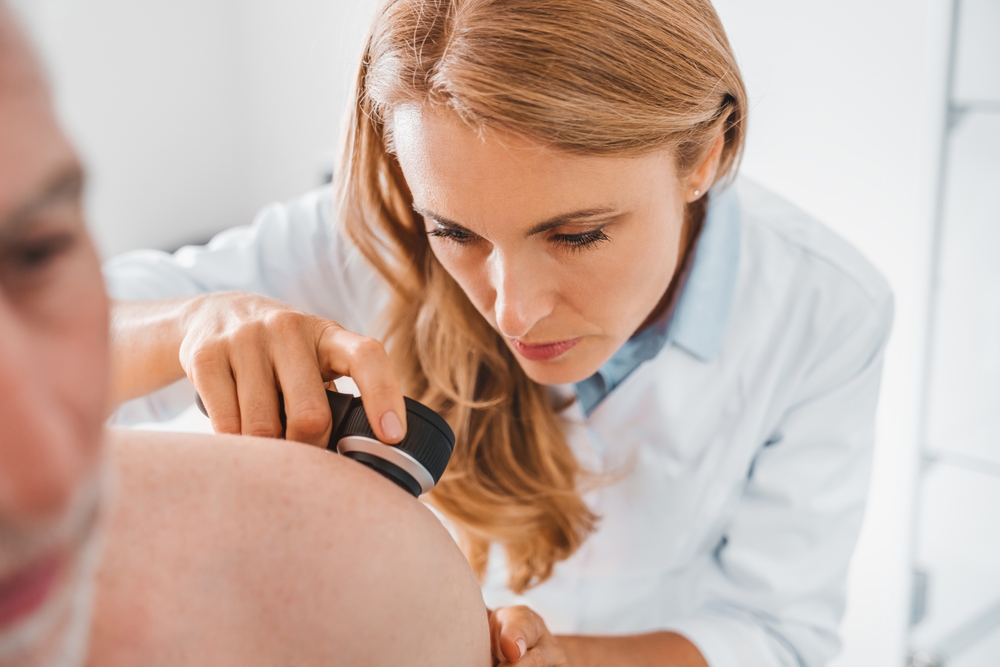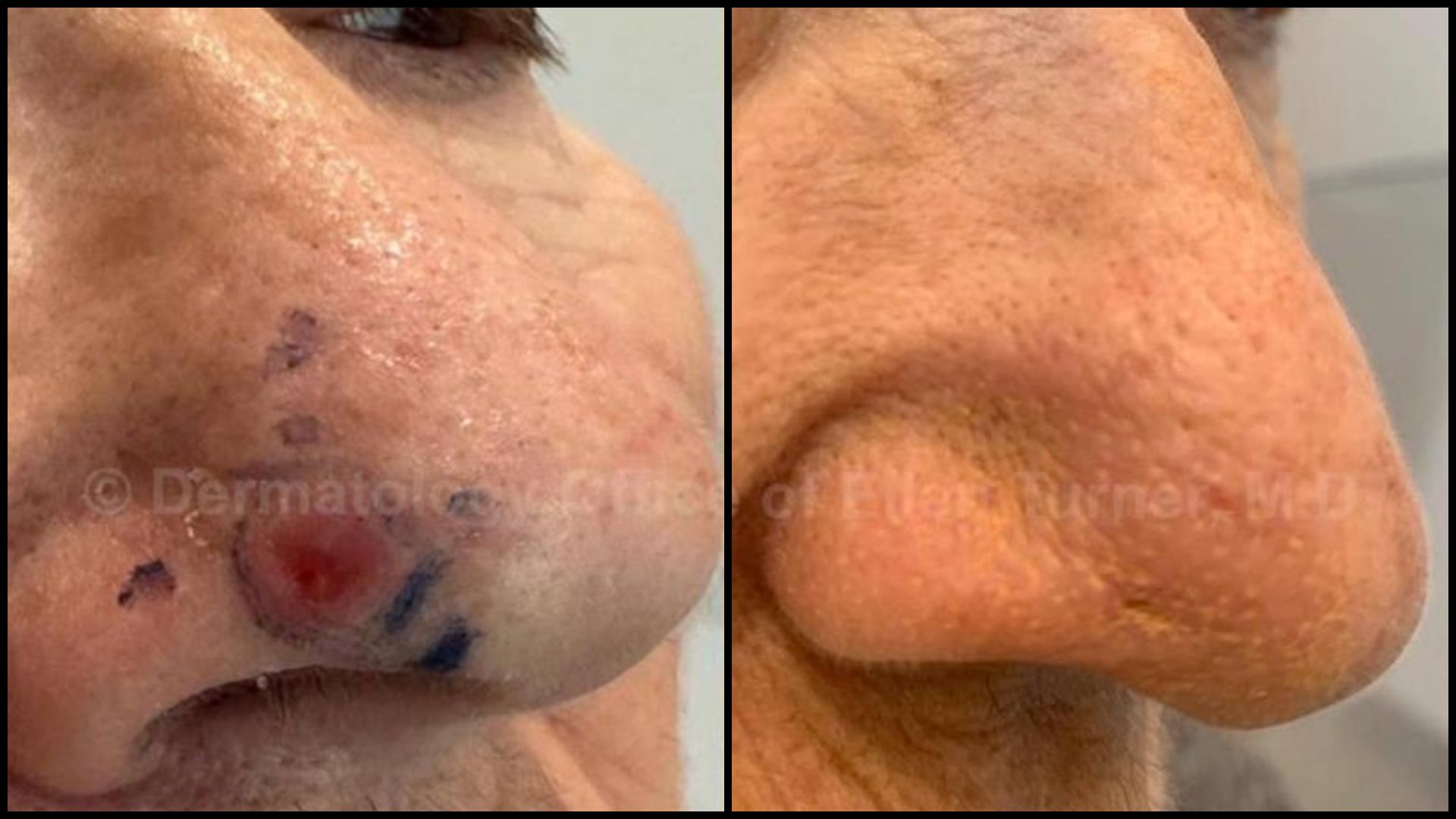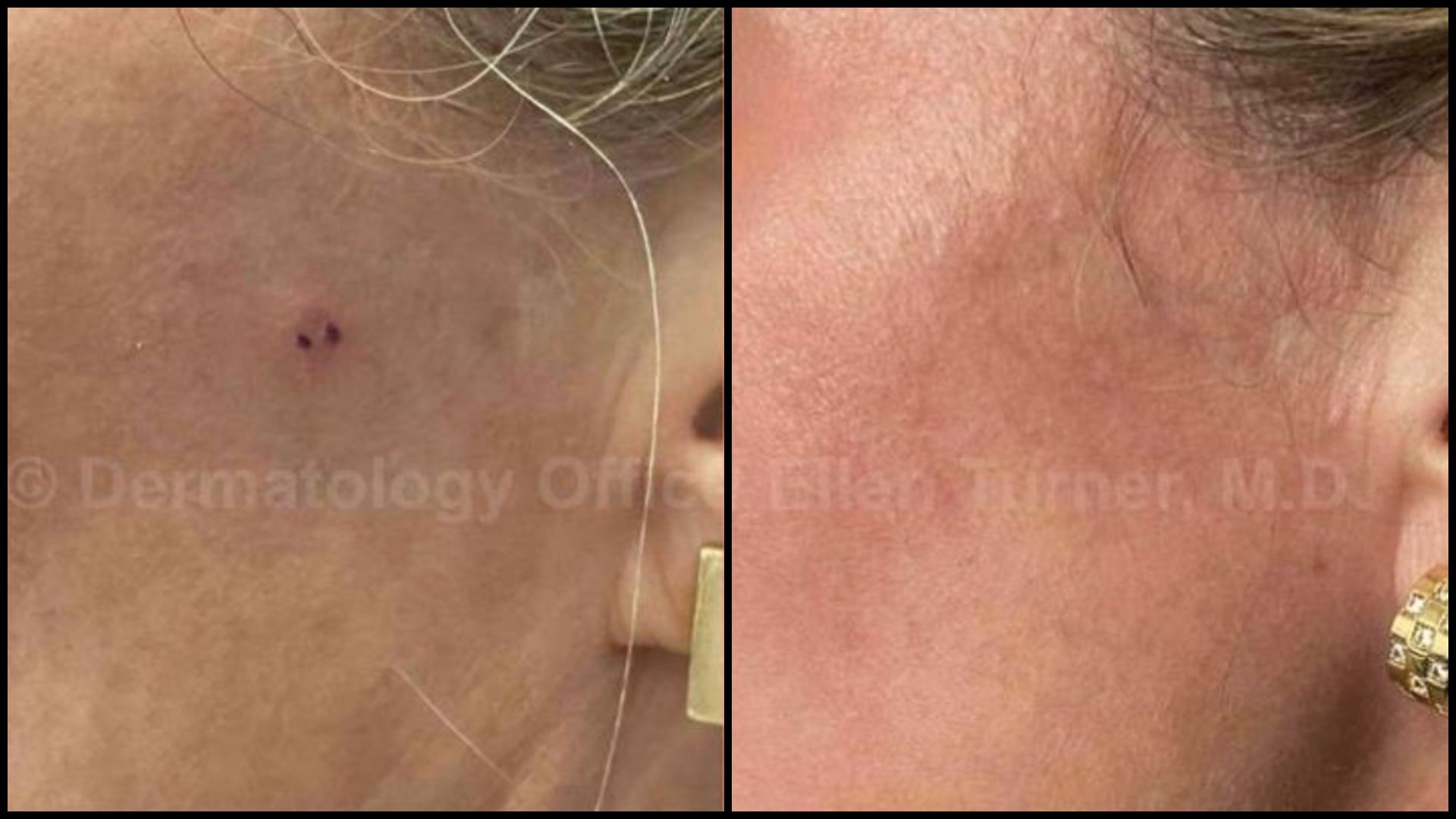Medical Dermatology
Basal Cell Carcinoma in Dallas
- Home
- Medical Dermatology
- Skin Cancer
- Basal Cell Carcinoma in Dallas
Find Treatment for the Most Common Form of Skin Cancer

Dr. Ellen Turner can successfully treat your biopsy-proven basal cell carcinoma at her Dallas-based practice. Basal cell carcinoma, deriving itself from the bottom-most or basal layer of the skin, is the most common type of cancer, as well as the most common type of skin cancer.
Medical Dermatology
Contact us online about setting up an appointment or call (214) 373-7546. Find out more about what to do about basal cell carcinoma in the Dallas area today.
How Do I Know if I Have Basal Cell Carcinoma?
Diagnosis of basal cell carcinoma requires a biopsy, or a sample of the skin cells. To do this, Dr. Turner and her trained staff will locally anesthetize the area to be sampled and take a surgical blade to remove the needed cells. The skin specimen will be sent to a pathology lab for review by a certified dermatopathologist, someone who is trained specifically in conditions related to the skin only. If there appears to be malignant cells, the dermatopathologist will note how deep the cells penetrate. If the cells remain high in the layers of skin, the cancer may be considered superficial. In the case where all of the layers of skin are affected, it is considered to be nodular. The depth of penetration and the amount of invasion of the basal cell carcinoma will determine the proper treatment options Dr. Ellen Turner can recommend for the patient.
What Does a Basal Cell Carcinoma Look Like?
Basal cell carcinoma can appear in various forms—some appear to be more pearly in coloration with evidence of fine blood vessels, or telangiectasias running throughout the abnormal tissue. Other basal cell carcinomas, also commonly abbreviated as BCC, can be shiny pink and scaly when superficial or even pigmented in coloration, depending on the background skin color of the individual.
Will a Basal Cell Carcinoma Spread Internally and Hurt Me?
Basal cell carcinoma grows so slowly over time, it can sometimes be easy for patients to ignore the warning signs: new lesion, growing lesion, or changes in the appearance of a lesion. However, many basal cells can break the skin down and lead to bleeding, which oftentimes prompts patients to come to the dermatologist, such as Dr. Ellen Turner, for diagnosis and treatment.
Basal cell carcinoma, when caught early, can be easily treated. Even if basal cell carcinomas are allowed to slowly grow over many months, and even years, treatment is still very possible and can allow for a normal life span and good quality of life. However, it is always best to diagnose basal cell carcinoma as early as possible in order to minimize the amount of treatment required to ensure the cancer has been successfully and completely treated.
How is Basal Cell Carcinoma Treated?
Fortunately, there are multiple ways to effectively treat basal cell carcinoma (BCC). Dr. Ellen Turner carefully evaluates each case and guides patients toward the most appropriate approach.
Superficial Radiation Therapy
One of the most exciting and advanced developments in treating both basal cell carcinoma and squamous cell carcinoma is Superficial Radiation Therapy (SRT). This non-invasive, painless, and scar-free treatment uses precisely targeted radiation to destroy abnormal cells while preserving surrounding healthy tissue. Cure rates are extremely high—97–99%, comparable to Mohs surgery.

BEFORE AND AFTER SUPERFICIAL RADIATION
SRT is especially beneficial for:
- Cosmetically sensitive areas (nose, ear, eyelid, or lower leg) where preserving tissue is critical.
- Elderly patients or those with health conditions who want to avoid surgery.
- Anyone seeking a less invasive treatment with no downtime.
Dr. Turner has partnered with a board-certified radiation oncologist to provide this advanced option for her patients in the Dallas/Fort Worth area, ensuring the highest level of safety and effectiveness.

BEFORE AND AFTER SUPERFICIAL RADIATION
Surgical Excision
For some BCCs, standard surgical excision remains an option. This procedure is performed under local anesthesia, with a 4 mm margin removed around the tumor to ensure full clearance. While effective, excision always results in a scar and requires wound care during the healing process.
Electrodessication & Curettage (ED&C)
In cases of superficial basal cell carcinoma, ED&C may be used. The tumor is scraped with a curette, and an electric current is applied to destroy remaining cancer cells. The cycle is repeated three times for clearance. Healing is slower than with excision or SRT, and scarring still occurs, though results are often acceptable when performed in appropriate locations.
Mohs Surgery
Mohs surgery, while historically considered the “gold standard,” is now less favored due to its invasive nature and patient burden. The process involves removing skin layer by layer, with microscopic evaluation until no cancer cells remain. Although effective, Mohs is associated with:
- Invasive surgery with downtime and risks such as bleeding, hematoma, scarring, pain, and infection.
- Challenging wound care, particularly for elderly patients.
- Higher costs to both patients and insurers compared to non-invasive options.
Regardless of treatment, patients should continue with full-body skin exams every six months to detect new or changing lesions early, ensuring the best long-term outcomes.

